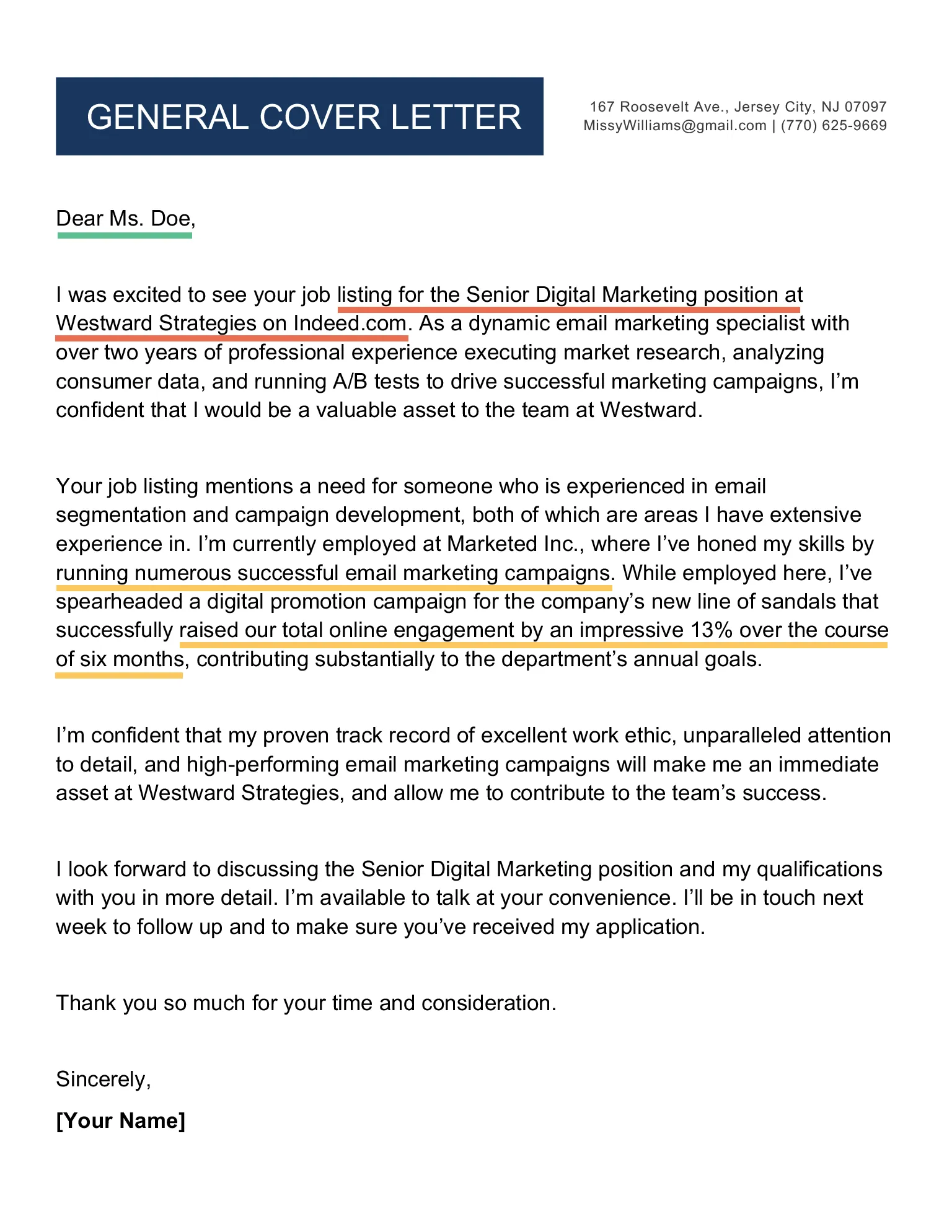What is a Cover Letter?
A cover letter is a formal document that you submit alongside your resume when applying for a job. It serves as an introduction, providing context to your application and highlighting your qualifications, skills, and experience. Unlike a resume, which is a factual summary, a cover letter allows you to express your personality, demonstrate your interest in the specific role and company, and explain why you are the ideal candidate. Think of it as your personal sales pitch, designed to convince the hiring manager to read your resume and, ultimately, invite you for an interview. A well-crafted cover letter can significantly increase your chances of getting noticed, as it shows that you’ve taken the time to understand the job requirements and tailor your application accordingly. It allows you to go beyond the information on your resume and elaborate on your achievements, providing a more detailed narrative of your professional journey and potential contributions to the company.
Cover Letter’s Importance
The importance of a cover letter cannot be overstated in today’s competitive job market. It’s often the first impression you make on a potential employer, setting the tone for your entire application. Many hiring managers consider a cover letter mandatory, as it demonstrates your communication skills, attention to detail, and genuine interest in the position. A strong cover letter showcases your ability to articulate your value proposition, emphasizing how your skills and experience align with the job requirements and company culture. It provides an opportunity to elaborate on specific achievements and provide context that might not be evident in your resume. By personalizing your cover letter for each application, you demonstrate that you’re not just sending out generic applications, but are genuinely interested in the specific opportunity. This personalization, along with a well-structured and compelling narrative, can significantly increase your chances of standing out from the competition and securing an interview. Moreover, it also allows you to address any potential gaps or concerns in your resume, providing a proactive explanation of your career trajectory.
Cover Letter vs Resume
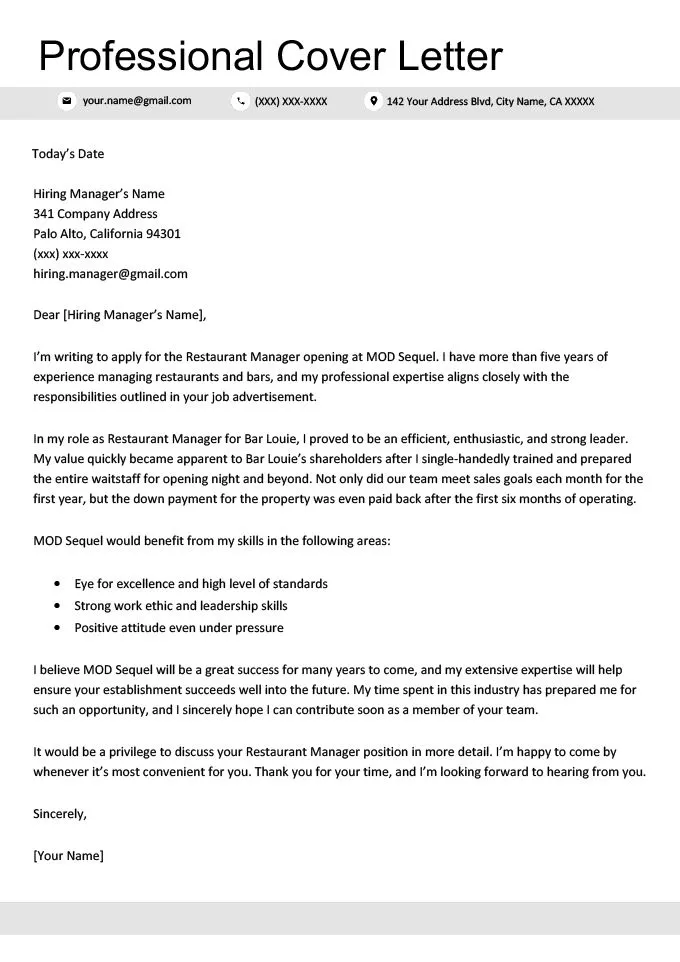
While both a cover letter and a resume are essential components of a job application, they serve different purposes and contain different types of information. Your resume provides a concise summary of your work experience, education, skills, and accomplishments. It’s a factual document designed to give employers a quick overview of your qualifications. A cover letter, on the other hand, is a more narrative and personalized document. It expands on the information in your resume, explaining why you are the right fit for the specific job and company. The resume is a list, while the cover letter is a story. The resume lists your skills; the cover letter demonstrates how you’ve used those skills to achieve results. The resume focuses on the past; the cover letter looks to the future, highlighting your potential contributions to the company. You can think of the resume as the “what” (what you’ve done) and the cover letter as the “why” (why you’re a good fit and why you want the job). Both are necessary, but they play complementary roles in presenting your candidacy effectively.
Key Elements of a Job Cover Letter
A well-structured cover letter is composed of several key elements that work together to create a compelling argument for your candidacy. These elements include contact information, the hiring manager’s information, a salutation, an opening paragraph, the body paragraphs (highlighting your skills and experience, showcasing achievements, and addressing the job requirements), a closing paragraph with a call to action, and a formal closing and signature. Each section plays a vital role in conveying your qualifications, enthusiasm, and suitability for the role. Ensuring all these elements are present and well-crafted increases the effectiveness of your cover letter. A thoughtful and well-organized cover letter demonstrates professionalism and attention to detail, both of which are highly valued by employers. Moreover, it helps you structure your thoughts and present your application in a logical and persuasive manner.
Contact Information
At the top of your cover letter, include your full name, address, phone number, and email address. This information should be clear and easy to find. Ensure your email address is professional (e.g., using your name). Avoid using nicknames or informal email addresses. Accuracy is crucial to ensure the hiring manager can easily contact you. It also establishes your identity and provides the necessary contact details for the company to reach you quickly and efficiently.
Hiring Manager’s Information
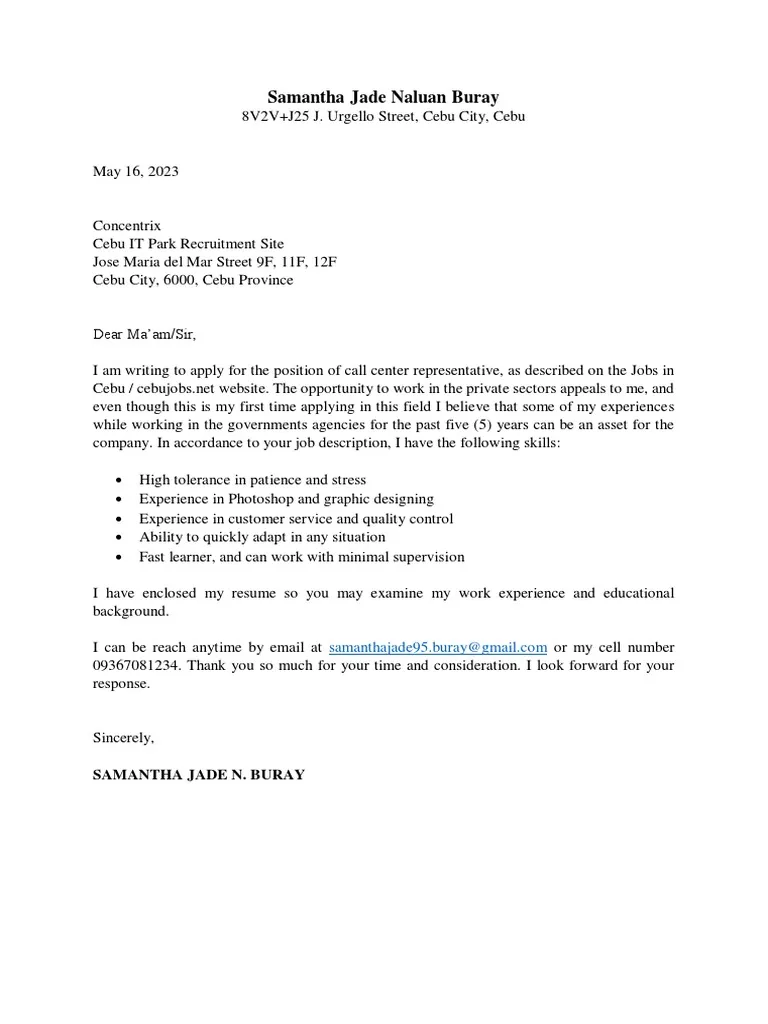
Always address your cover letter to a specific person if possible. Research the hiring manager’s name and title. If you cannot find a specific name, use a professional title such as “Hiring Manager” or “Recruiting Team.” Addressing the letter to a specific individual shows that you’ve taken the time to research the company and personalize your application. It creates a more direct and engaging connection. Avoid generic greetings like “To Whom It May Concern.” If the specific name is unavailable, make sure you use correct titles like Mr., Ms., or Dr.
Salutation
Use a professional salutation, such as “Dear Mr. [Last Name],” or “Dear Ms. [Last Name],” if you know the hiring manager’s name. If you’re unsure of the name, use “Dear Hiring Manager,” or “Dear Recruiting Team.” Avoid overly casual salutations. The salutation sets the tone for the rest of the letter. It should be formal and respectful. If you’re unsure of the gender, use the full name, like “Dear [First Name] [Last Name].” Always double-check the spelling of the name and title to make a good first impression.
Opening Paragraph
The opening paragraph is your first opportunity to grab the hiring manager’s attention. State the position you are applying for and how you learned about the opportunity. Briefly mention why you are interested in the role and the company. Show your enthusiasm. Keep it concise and engaging. Make a strong first impression by clearly stating your objective and creating an immediate sense of interest. Consider starting with a compelling sentence about the company, the role or a significant achievement that showcases your value.
Highlighting Your Skills and Experience
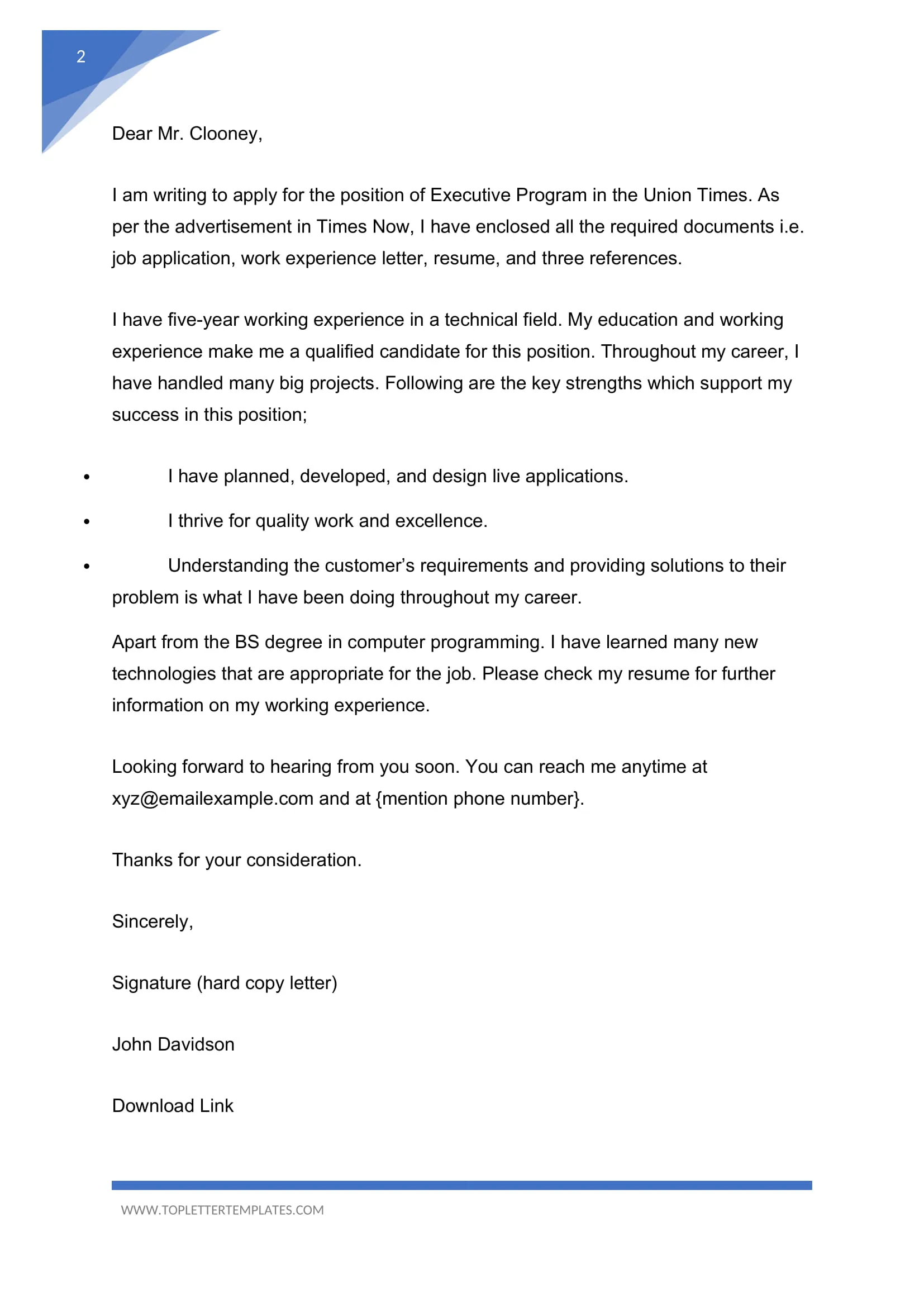
The body of your cover letter is where you demonstrate how your skills and experience align with the job requirements. Review the job description carefully and identify the key skills and qualifications the employer is seeking. Provide specific examples from your previous roles and experiences that illustrate your abilities. Use action verbs to describe your accomplishments. Tailor each cover letter to the specific job, highlighting the most relevant experiences and skills that match the requirements. Focus on what makes you the ideal candidate by showing how your achievements have contributed to the success of previous employers.
Showcasing Achievements
Don’t just list your responsibilities; focus on your accomplishments and the results you’ve achieved in previous roles. Use the STAR method (Situation, Task, Action, Result) to provide detailed examples of how you’ve contributed to previous employers. Quantify your achievements whenever possible (e.g., “Increased sales by 15%”, “Reduced customer complaints by 20%”). This helps to demonstrate the value you can bring to the new role. Use numbers and metrics to highlight your accomplishments and provide tangible evidence of your impact. Demonstrating concrete achievements makes your application much more compelling.
Addressing the Job Requirements
Carefully analyze the job description and address each of the key requirements in your cover letter. Explain how your skills, experience, and education match the requirements outlined. If there are specific software, tools, or certifications required, make sure to highlight them and explain your proficiency. Show that you understand the needs of the role and that you possess the necessary qualifications to excel in the position. Tailor your letter to demonstrate that you are a strong match for this particular job and company by directly addressing each point mentioned in the job description.
Demonstrating Enthusiasm and Fit
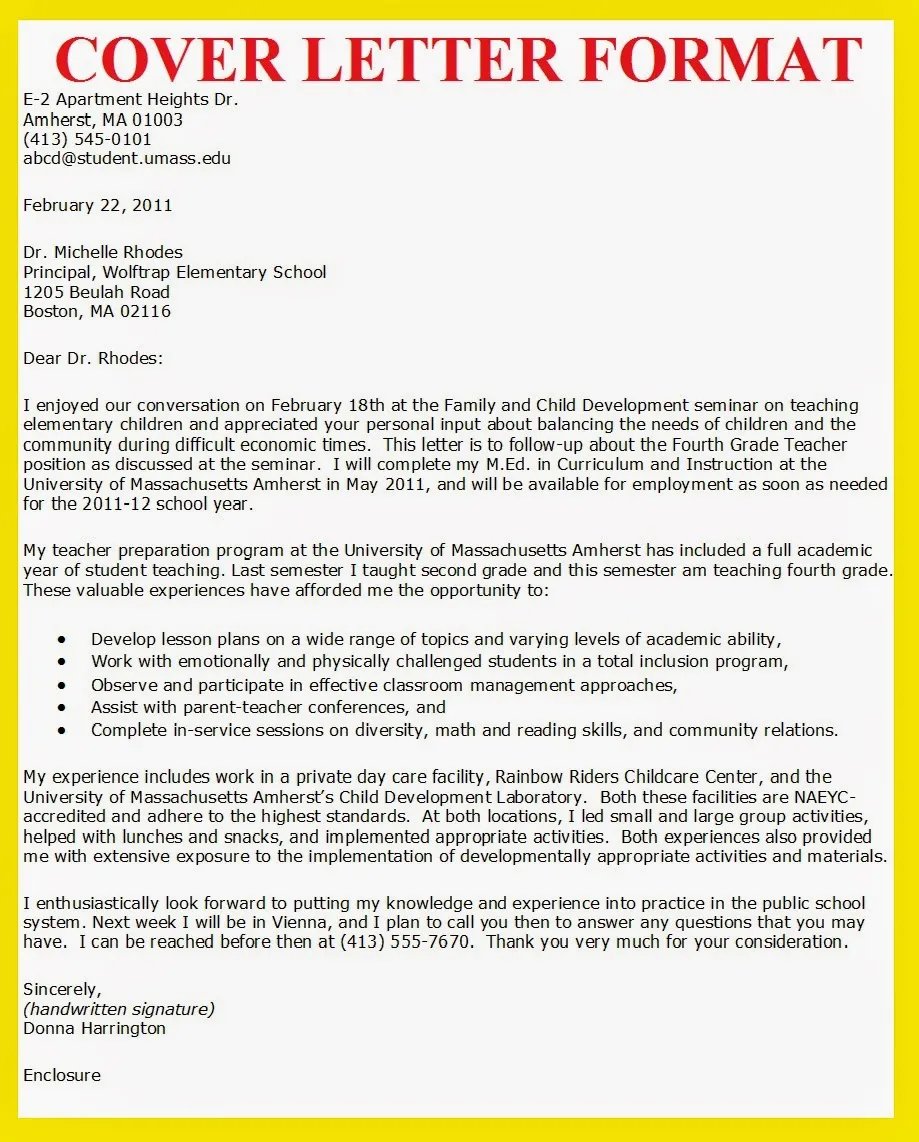
Show your genuine interest in the company and the role. Research the company’s mission, values, and recent achievements, and mention them in your cover letter. Explain why you’re excited about the opportunity. Highlight how your personal and professional goals align with the company’s objectives. Expressing enthusiasm increases your chances of creating a positive impression. Demonstrate your understanding of the company’s culture and show how your values align with the organization. This conveys genuine interest and makes you stand out from other applicants.
Closing Paragraph
In your closing paragraph, reiterate your interest in the position and thank the hiring manager for their time and consideration. Summarize why you are a strong fit for the role and what you hope to achieve. Avoid simply repeating what you’ve already said. Instead, use the closing to make one final, impactful statement that reinforces your key message and enthusiasm. Make it clear that you are eager to learn more about the opportunity and are looking forward to the next steps in the hiring process. Keep it concise and professional.
Call to Action
Include a clear call to action in your closing paragraph. State that you are available for an interview and provide your contact information again. Invite the hiring manager to contact you if they have any questions. Make it easy for the hiring manager to take the next step. Ensure that the call to action encourages further interaction and a clear next step in the recruitment process. State that you look forward to hearing from them soon.
Formal Closing and Signature
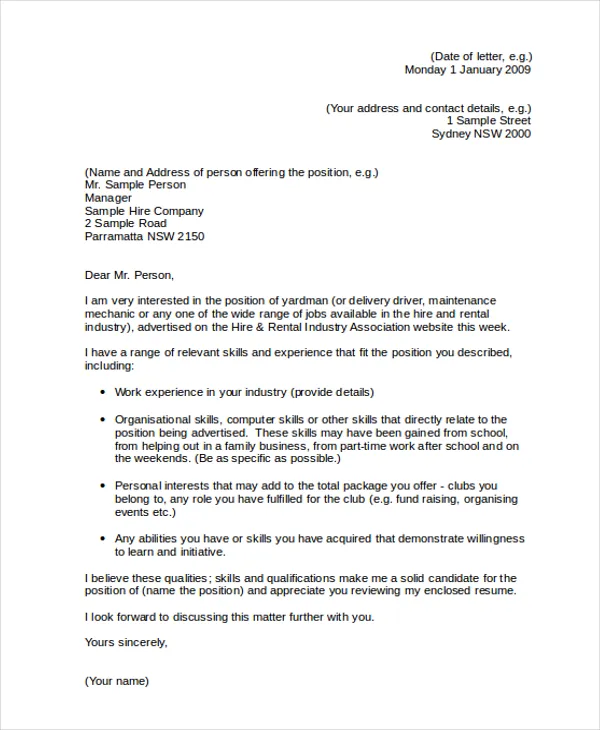
Use a professional closing, such as “Sincerely,” or “Best regards.” Type your full name below the closing. If you are submitting a printed copy, leave space for your signature above your typed name. Ensure a professional and polished look. Ensure that the final words are as professional as the rest of the document. It reinforces the overall tone of your cover letter.
Formatting a Cover Letter
The formatting of your cover letter is crucial. Poor formatting can make your letter difficult to read and detract from your message. Proper formatting enhances readability and makes a good impression. Use standard fonts, margins, and spacing to ensure your cover letter looks professional. Proper formatting is just as important as the content itself. Ensure consistency throughout the document.
Font and Font Size
Use a professional and easy-to-read font, such as Times New Roman, Arial, or Calibri. Use a font size between 10 and 12 points. Avoid using overly decorative or unusual fonts. Using a professional font makes your letter easier to read and more visually appealing. The goal is to make your letter easy to read, not to distract the reader.
Margins and Spacing

Use standard 1-inch margins on all sides of the page. Use single-spacing within paragraphs and double-spacing between paragraphs. Proper spacing enhances readability and makes the document look clean and organized. Consistent margins and spacing give your letter a polished appearance.
Length of the Cover Letter
Keep your cover letter concise and to the point. Aim for one page, or approximately 250-400 words. Avoid writing excessively long cover letters, as they can be overwhelming for the reader. Be selective about the information you include, and focus on the most relevant and impactful details. Brevity is key, but ensure you include all the necessary and relevant information.
Cover Letter Examples by Industry
Cover letters should be tailored to the specific industry and job role. Tailoring your cover letter demonstrates that you understand the industry’s specific requirements. Researching industry-specific examples will help you to adapt your cover letter. Certain industries require specific language, skills, and formatting. Customizing your cover letter for each industry demonstrates your attention to detail and your ability to adapt to different professional environments.
Tech Industry Cover Letter
For tech industry roles, highlight your technical skills, projects, and contributions to open-source initiatives. Mention any relevant certifications, programming languages, and frameworks. Demonstrate your knowledge of industry trends and technologies. Show your passion for innovation and your ability to adapt to a fast-paced environment. Focus on your experience with specific technologies relevant to the role.
Healthcare Cover Letter
In a healthcare cover letter, emphasize your relevant experience, licenses, and certifications. Highlight your patient care skills and any experience with medical software or equipment. Demonstrate your understanding of healthcare regulations and ethical considerations. Focus on your ability to work in a team and your commitment to providing quality patient care. Mention specific experiences and the positive outcomes you have achieved for patients.
Marketing Cover Letter
In a marketing cover letter, highlight your marketing skills, campaigns, and results. Quantify your achievements with metrics and statistics. Mention any relevant software, tools, and marketing platforms you have used. Showcase your creativity, communication skills, and understanding of marketing strategies. Demonstrate your ability to drive results and contribute to brand growth. Provide details on the specific campaigns you have worked on and the achievements.
Finance Cover Letter
For finance roles, emphasize your financial analysis skills, knowledge of accounting principles, and experience with financial software. Demonstrate your attention to detail, accuracy, and understanding of financial regulations. Mention any relevant certifications, such as a CPA or CFA. Highlight your ability to manage financial data, identify risks, and contribute to sound financial decision-making. Provide examples that showcase your ability to analyze financial statements and implement effective financial strategies.
Common Mistakes to Avoid
Avoiding common mistakes can significantly improve the effectiveness of your cover letter. Pay close attention to the details and review your letter carefully before submitting it. Addressing the mistakes can elevate your application. Mistakes can undermine your application.
Generic Cover Letters
Avoid sending generic cover letters that are not tailored to the specific job or company. Tailor your cover letter to each role you are applying for. Show the hiring manager that you understand the specific needs and requirements of the position. Generic cover letters are easily spotted and indicate a lack of interest in the role.
Typos and Grammatical Errors
Proofread your cover letter carefully for typos, grammatical errors, and spelling mistakes. Use a grammar checker and have a friend or colleague review your letter. Typos and grammatical errors make a bad impression and demonstrate a lack of attention to detail. Ensure a polished and professional final product.
Ignoring the Instructions
Always follow the instructions provided in the job posting. If the posting asks for a specific file type or format, make sure to comply. Ignoring instructions indicates that you lack attention to detail and aren’t interested in following the rules. Always adhere to the specific requirements provided by the employer.
Proofreading and Editing
Always proofread and edit your cover letter multiple times before submitting it. Check for clarity, conciseness, and accuracy. Proofreading is an essential part of the writing process. Having a second pair of eyes review your work will help catch any errors that you may have missed.
Tools and Resources
There are several tools and resources available to help you write a compelling cover letter. These resources can streamline the process and ensure your letter is well-written and professional. Consider using these tools to improve the quality of your application.
Online Cover Letter Builders
Use online cover letter builders to help you create a professional cover letter. These builders provide templates, suggestions, and guidance throughout the writing process. They can save you time and help you ensure your cover letter is well-structured and effective. Several websites offer free or paid cover letter builders, providing templates and guides to help you write a professional cover letter. These tools often offer guidance on the structure, content, and formatting of your letter.
Cover Letter Templates
Utilize cover letter templates to structure your letter and ensure that you include all the necessary elements. Templates provide a starting point and guide you on how to format and organize your content effectively. Templates are available in various formats (e.g., Word, Google Docs) and can be customized to match your needs. They provide structure and ensure you don’t miss any key elements.
Final Thoughts
Writing a strong cover letter requires time, effort, and attention to detail. By following the tips and guidelines in this article, you can create a cover letter that effectively showcases your qualifications, skills, and experience. A well-written cover letter is key to making a great first impression. Crafting a cover letter is a strategic effort and is essential in securing interviews and advancing your job search. Each cover letter should be personalized to reflect your unique experiences and align with the specific job requirements.
Final Tips
Always tailor your cover letter to the specific job and company. Proofread your cover letter carefully before submitting it. Keep your cover letter concise and easy to read. Use a professional tone and avoid clichés. Show enthusiasm and genuine interest in the opportunity. By implementing these tips, you can make your cover letter stand out and increase your chances of landing an interview. Make your cover letter personalized and unique.
